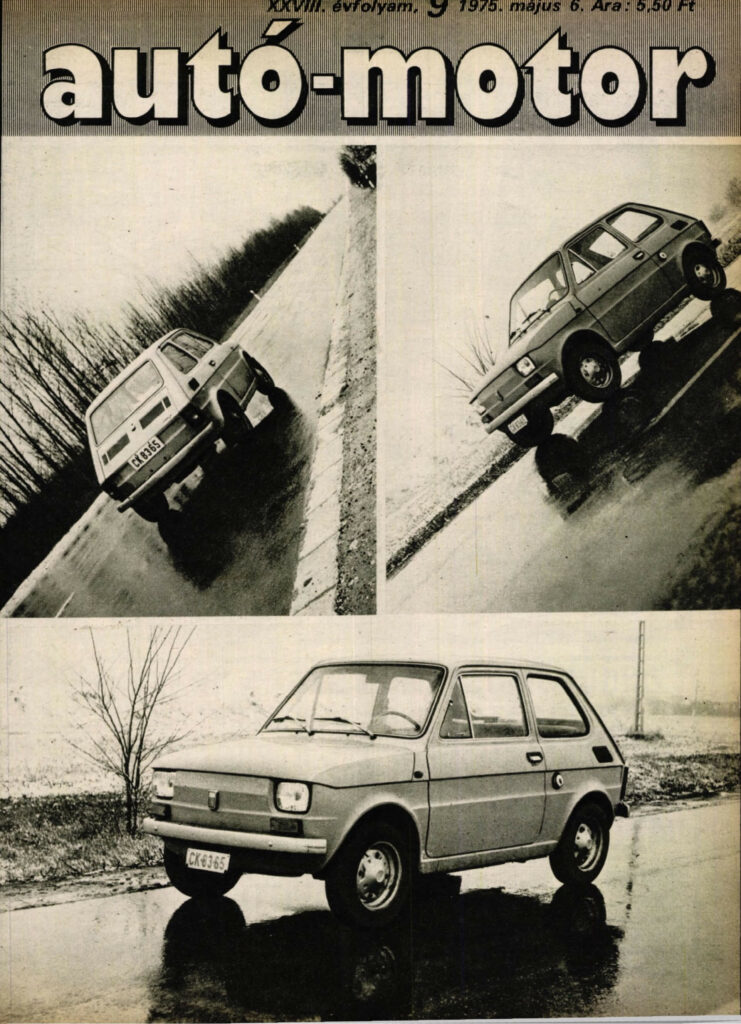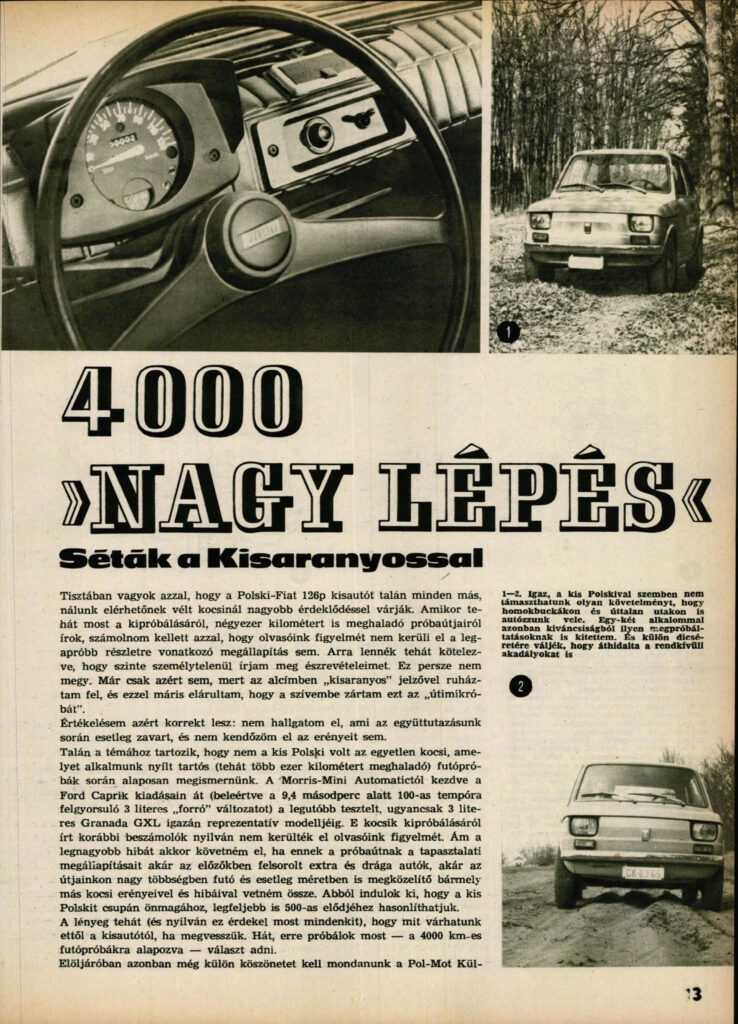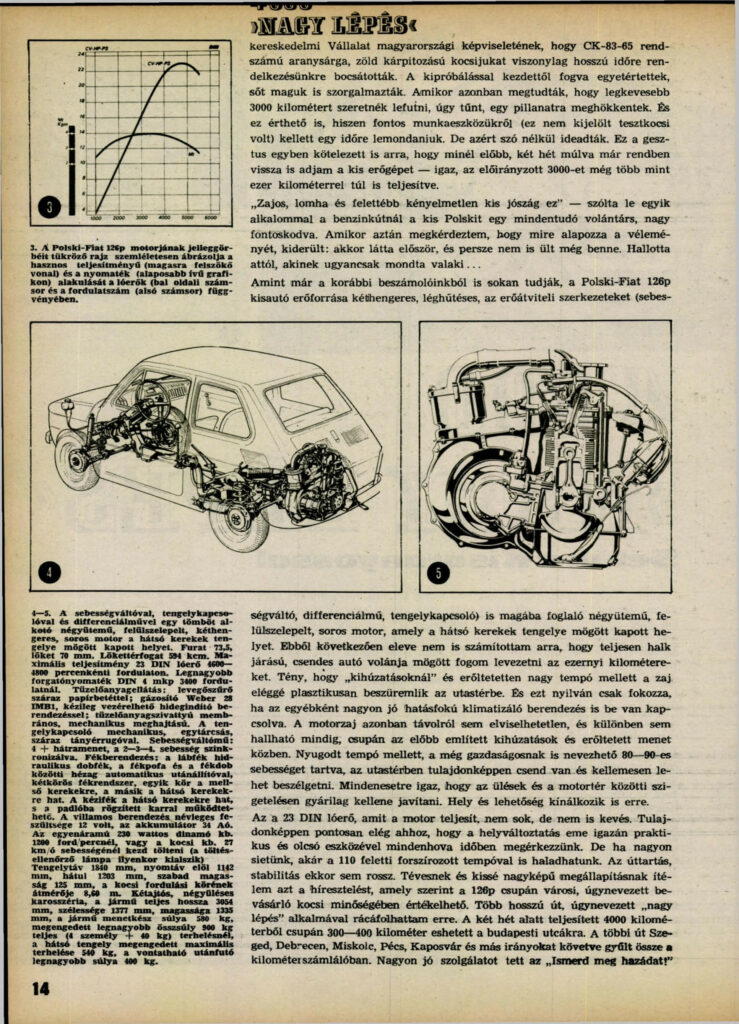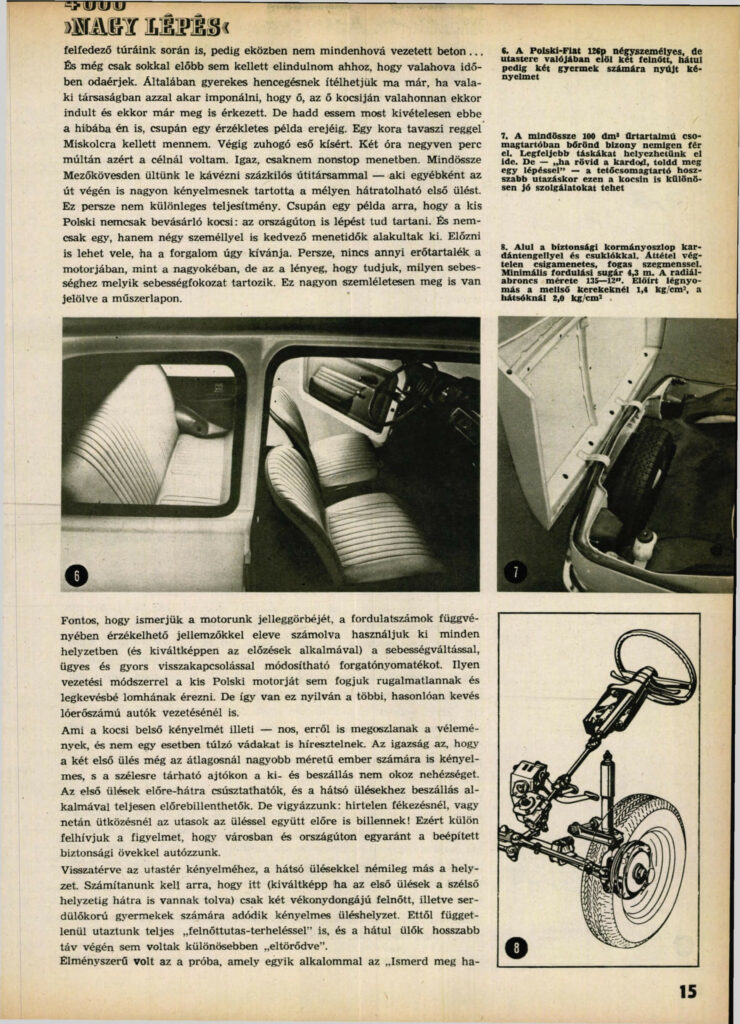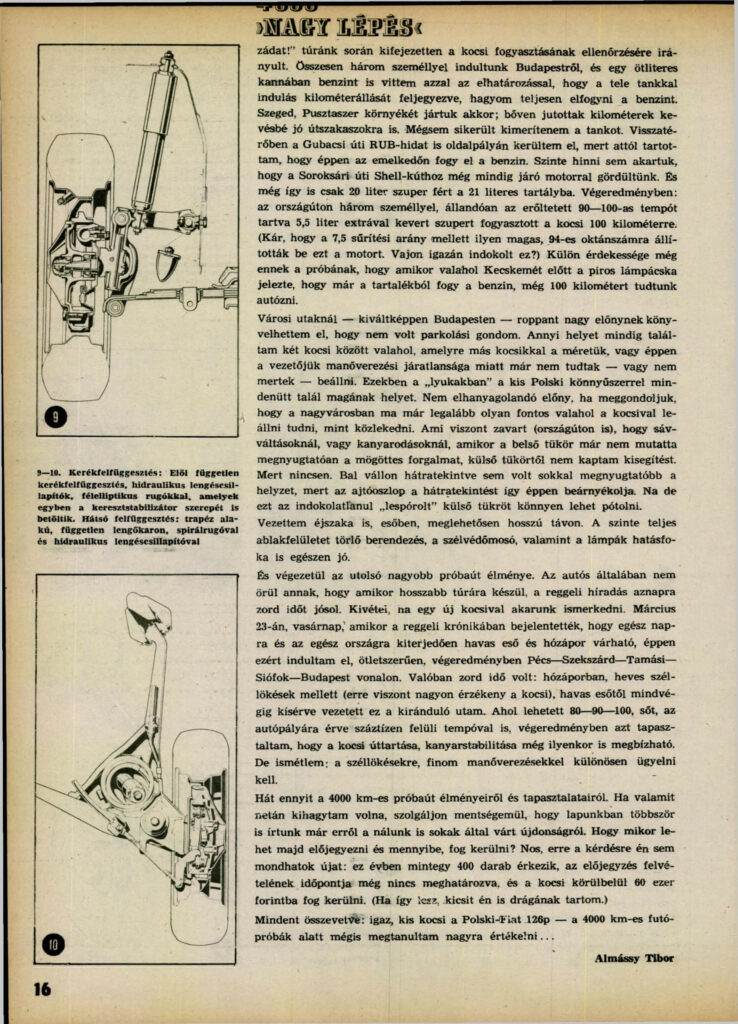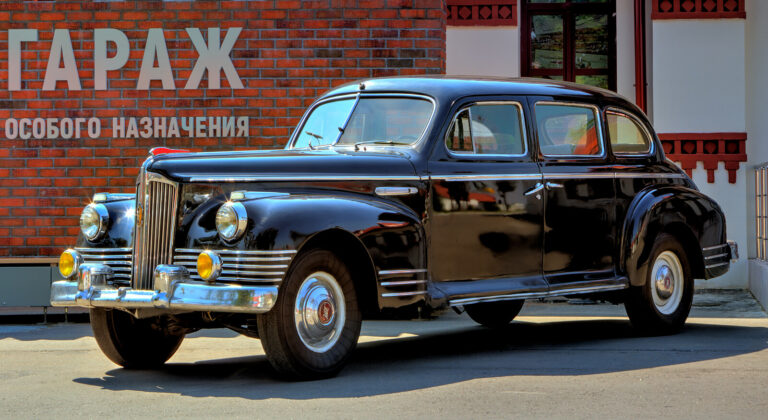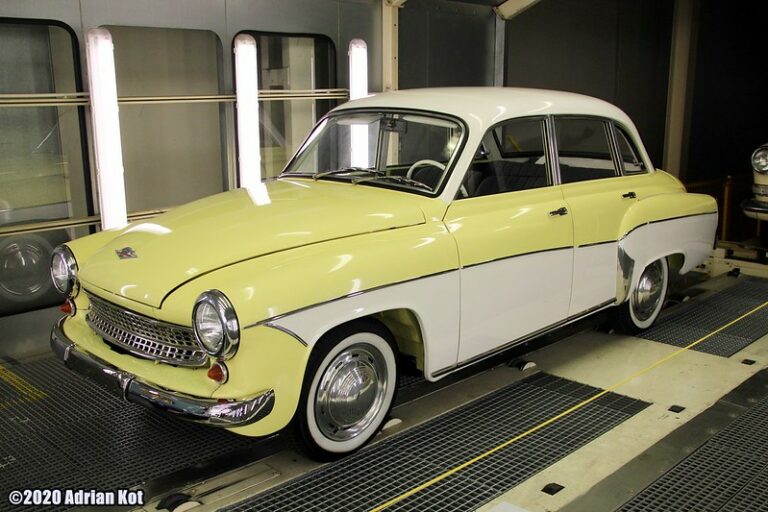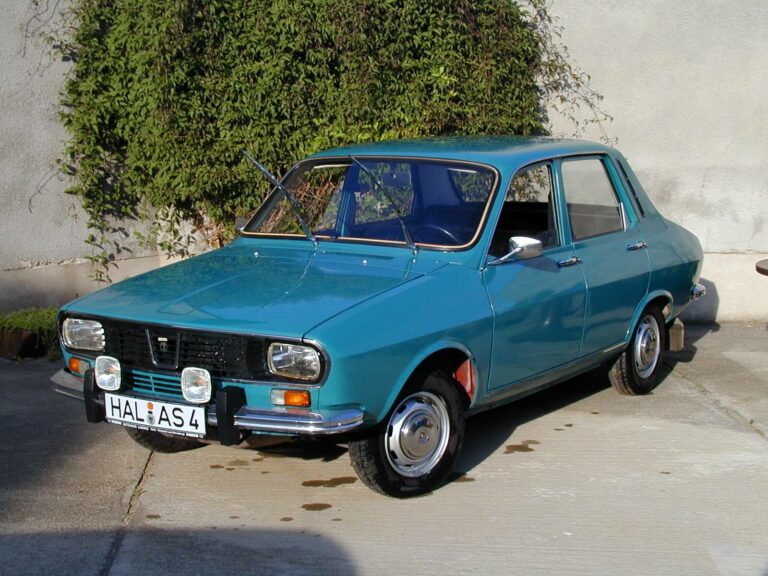1976 - 4000 big steps
Test drive with "Kispolsky"
1976 May On 6 June, the Car Engine a Polski-Fiat 126p the experience of its four thousand kilometre test drive Tibor Almássy from the pen. The journalist skilfully shares his real opinion of the car in a kind of flowery language, attributing negative impressions to "rumours". The writing is a real journey through time, a textbook example of socialist journalism with content hidden between the lines. The article can be found after the introduction, after the ♠ icon.
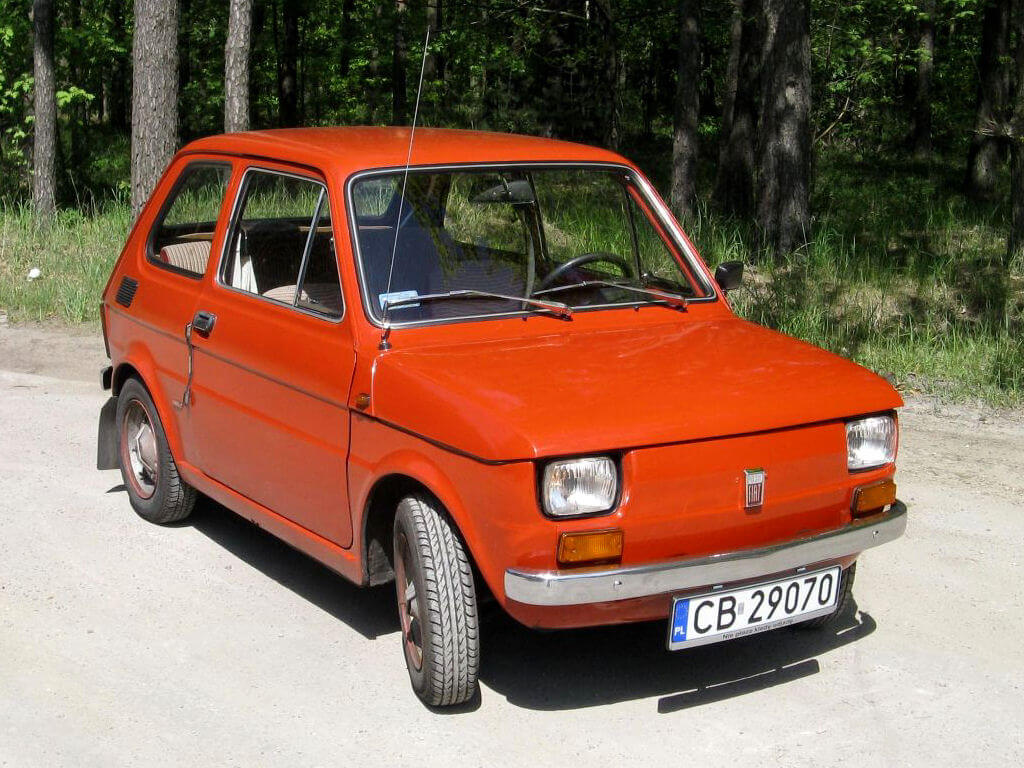
A 1973 example - Image source: wiki / P-sat
In the late 1960s, Poland began to monitor the market for a possible licensing agreement. The aim was to find a 'mass car', but the licensing conditions weighed heavily on the model's merits: the cash-strapped Polish economy was keen to secure a contract where the licence rights and other obligations could be paid for with finished cars or parts. Fiat of Italy agreed to these terms, which had been negotiated since July 1970 (and by 1979 the Polish state had repaid all its obligations to FIAT). The Polish side preferred the second option. In addition to Fiat, negotiations were held with Toyota (Corolla), Citroën (Dyane), Renault (4 and 5), Volkswagen and NSU (Prinz and 1000), but Ford was also considered. On 29 October 1971, an agreement was signed with Fiat on technical and licensing cooperation for the 126 model, and on 1 January 1972, the Bielsko-Biała Mechanical Equipment Factory (Wytwórni Sprzętu Mechanicznego) was restructured to form the Fabryka Samochodów Małolitrażowych, the 'Kispolszki Factory'.
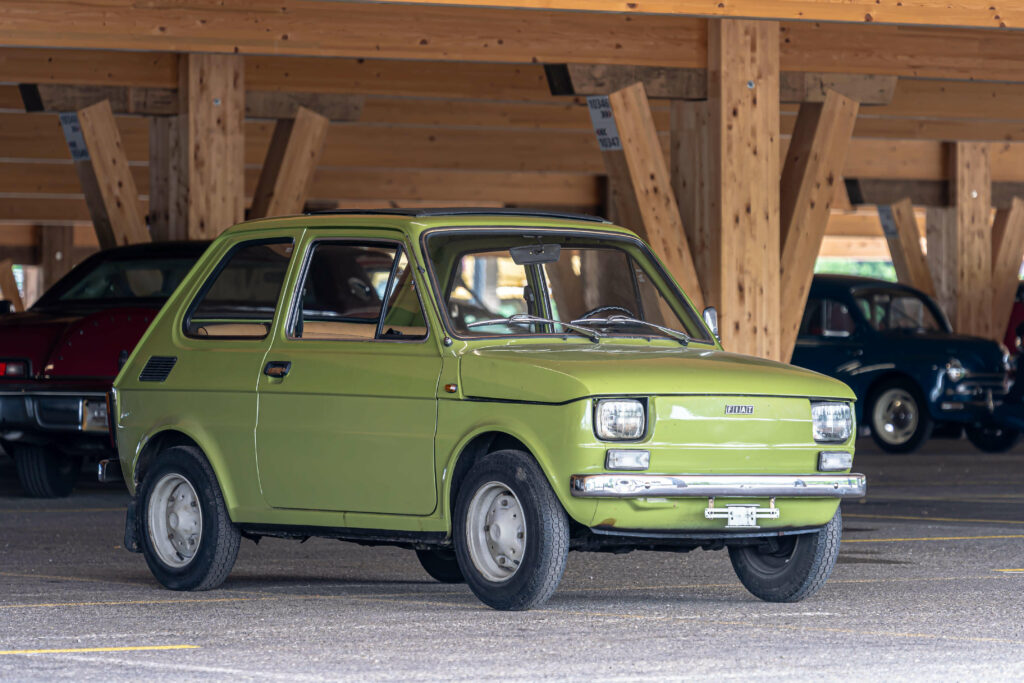
An Italian from 1976 - image source: cars.bonhams.com
The first 126 was produced at the Fiat plant in Cassino, Italy, in September 1972, and was unveiled at the Turin Motor Show in October and at the Defilad Square in Warsaw on 9 November.
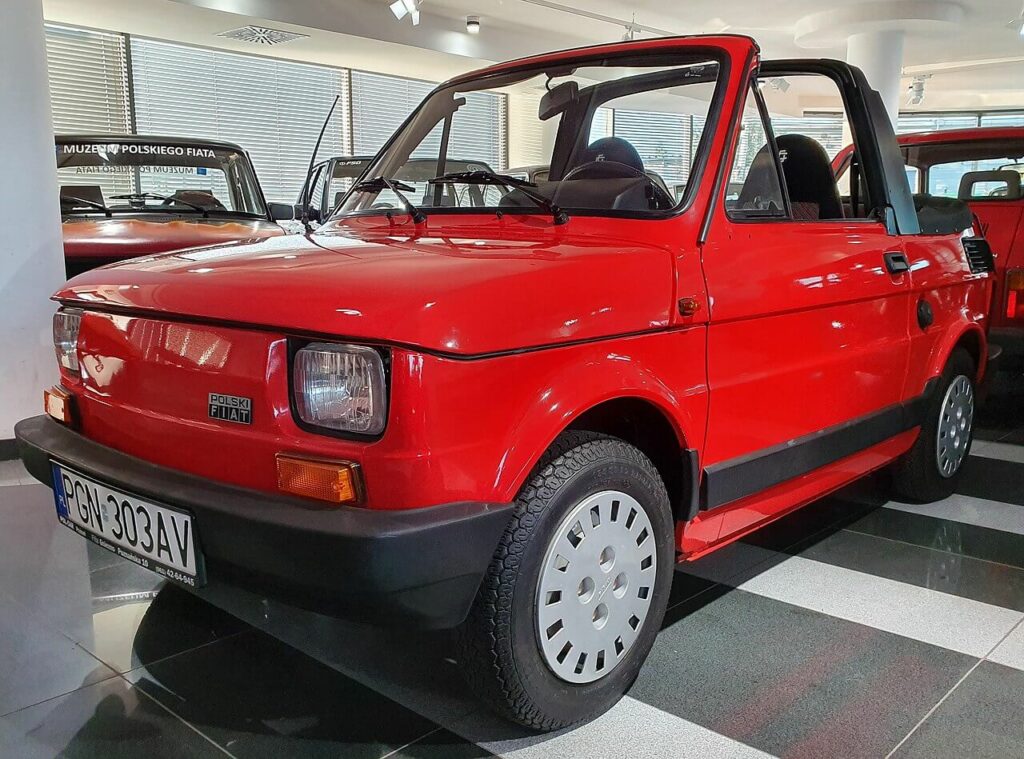
One of the many versions that have been made: the convertible - image source: wiki / strowger
On 5 February 1973, the PKO bank started accepting payments for the purchase of the Polish Fiat 126p... The price of the car was set at 69 000 zlotys, and the first examples were to be delivered to the prepaid owners in 1977, possibly a little earlier - by lottery. The average salary in Poland at the time was between 3,000 and 4,000 zlotys. (The official minimum wage was only 1,000 zlotys, and from 1974 it was 1,200.)
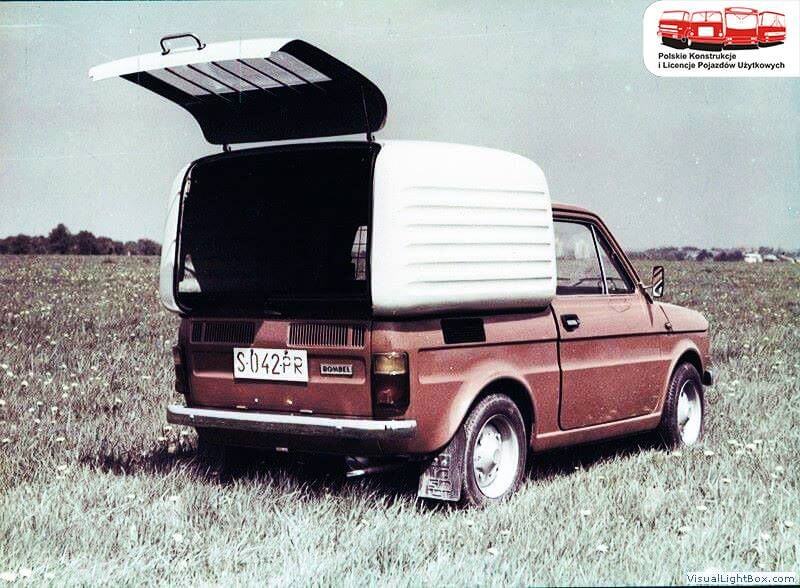
Another interesting variant: the Bombel - image source: pinterest / Adam "Bysio" (PL)
The first Polish Fiat 126p was built at FSM on 6 June 1973, still assembled from Italian parts. On the market, the car, nicknamed "Maluch" (Baby), fetched 110 000 PLN, but was also sold for domestic export at a price of 1100 USD.
Initially, the 126p was almost identical to the Fiat 126, except that the 126p had a slightly higher ground clearance, a different rear grille and orange front turn indicators, while the Italian examples had translucent bits.
On 18 September 1975, FSM's Tychy plant No 2 was put into operation, with an annual production capacity of 200 000 cars.
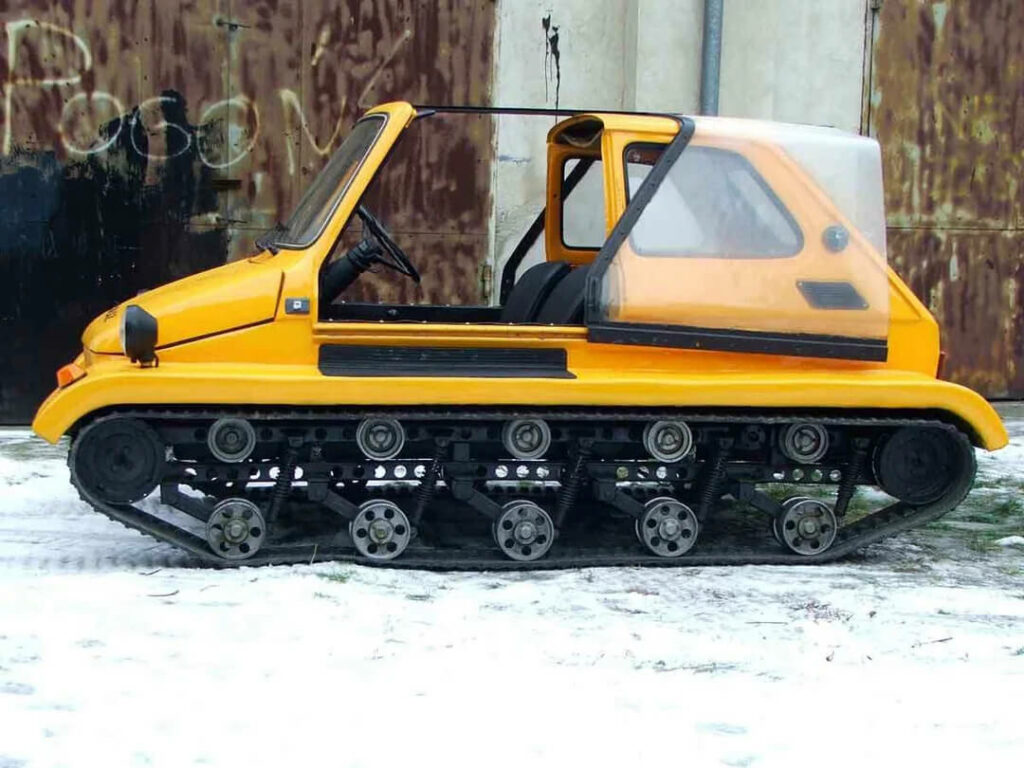
An amazing prototype: the Wszędołaz - image source: reddit / r/WeirdWheels
And business took off.
In the 1980s, the 126p was fitted with stronger brakes and new wheels, then with a hazard warning system, and from 1985 it was fitted with rear fog lights and reversing lamps. Around 1987 the undersized dynamo was replaced by a modern alternator and the car was fitted with electronic ignition. The 126p was fitted at the factory with a battery of just 35 amps.
The 126p was exported to several countries of the former Eastern Bloc, with Poland perhaps being the best-selling country.
Hungary manufactured and supplied the dashboard, ignition distributor, wiper, horn, tensioner and pistons for the car, of which a total of 4 671 586 were produced over its twenty-eight-year production cycle (3 318 674 of them in Poland).
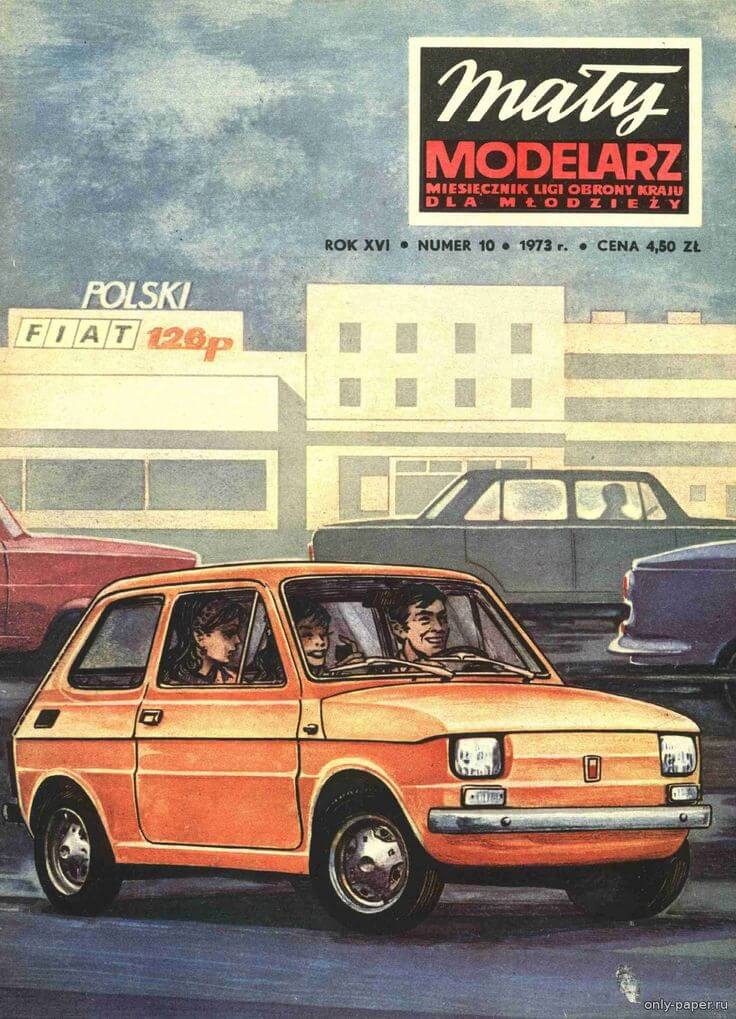
image source: pinterest / Arfael
Here is a summary of the experiences of the "test drive in Kispolsk" published in Autó-Motor on 6 May 1975 by Tibor Almássy. At the end of the post - as usual - you will find high-resolution photos of the article in the gallery.
♠
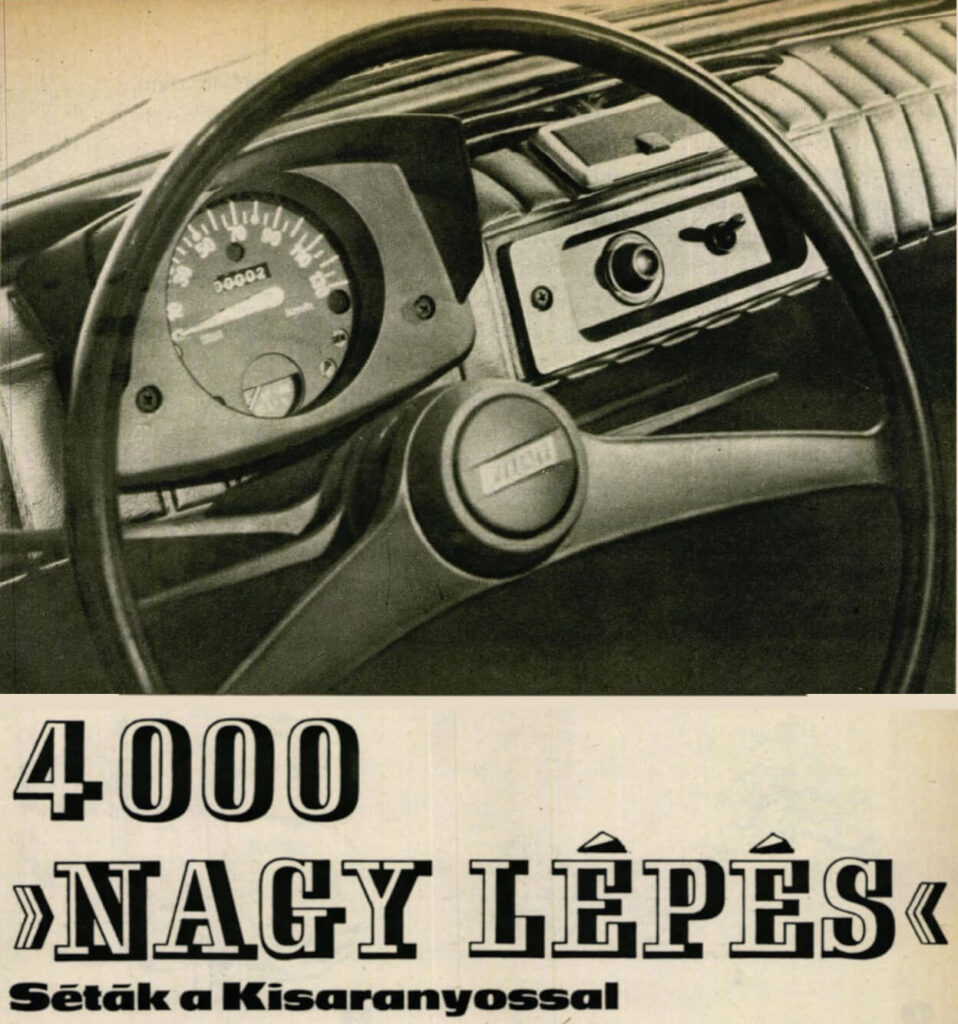
I am aware that the Polski-Fiat 126p small car is probably more popular than any other car that is thought to be available here. So when I write about its test drives, which exceeded 4,000 kilometres, I had to be aware that our readers would not miss the slightest detail. I would therefore be obliged to write my observations in an almost impersonal way. This, of course, I cannot do. If only because the subtitle 'little sweetheart' has already betrayed my affection for this 'travel microbiome'.
My assessment will be fair: I won't hide what might have bothered you during our journey together, and I won't gloss over its virtues.
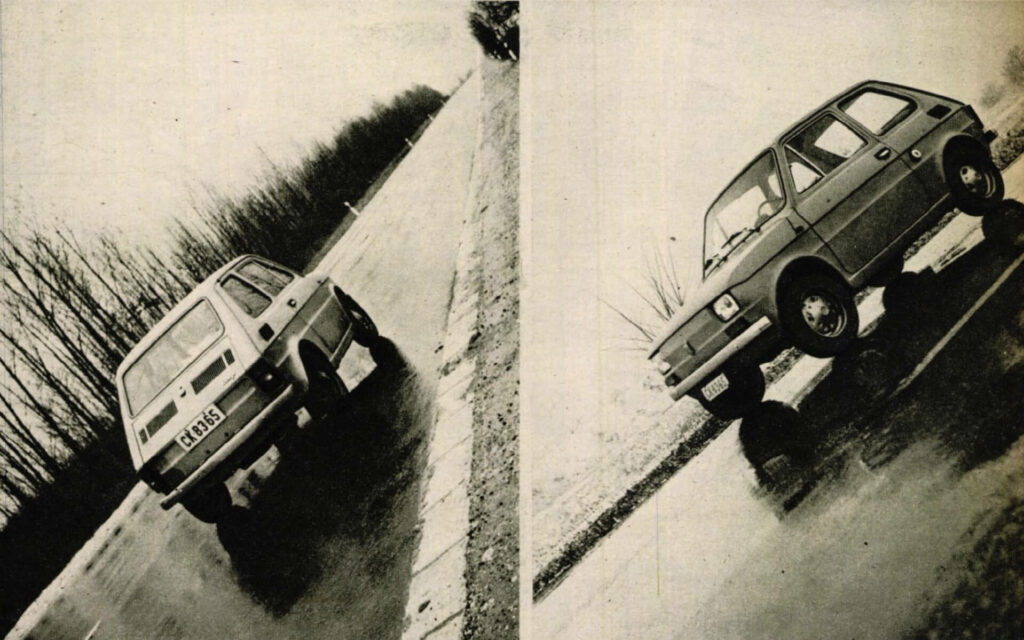
Perhaps it's relevant that the little Polski wasn't the only car we had the opportunity to get to know in depth during long-term road tests (i.e. over several thousand kilometres). From the Morris-Mini Automatic, through the Ford Caprik editions (including the 3 litre 'hot' version that can reach 100 km/h in 9.4 seconds) to the truly representative Granada GXL, also a 3 litre, which was tested last time. Previous test reports on these cars have obviously not escaped our readers' attention. But I would be making the biggest mistake if I were to compare the findings of this test drive either with the virtues and faults of the extra and expensive cars listed above or with those of any other car that is on our roads in large numbers and possibly approaching them in size. My starting point is that the little Polsky can only be compared to itself, or at most to its 500 predecessor.
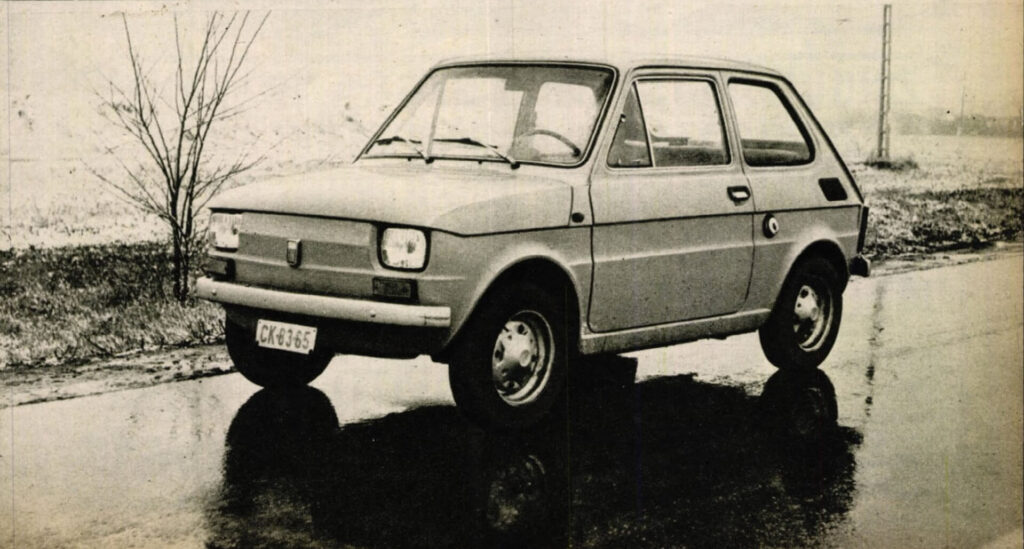
So the point is (and this is obviously of interest to everyone) what we can expect from this car if we buy it. Well, that's what I'm trying to answer now, based on the 4000 km of road tests.
But first of all, we have to thank the Hungarian representative of Pol-Mot Foreign Trade Company for providing us with their golden-yellow, green upholstered car with the registration number CK-83-65 for a relatively long period of time. They agreed from the outset to the test drive and even urged it themselves. However, when they were told that they wanted to drive at least 3,000 kilometres, they seemed momentarily taken aback. And understandably so, as they had to give up their important work tool (this was not a designated test car) for a while. But they gave it to me without a word. This gesture also obliged me to return the little power machine in good condition as soon as possible, after two weeks - even though it had covered more than 3,000 kilometres over the target mileage of 3,000.
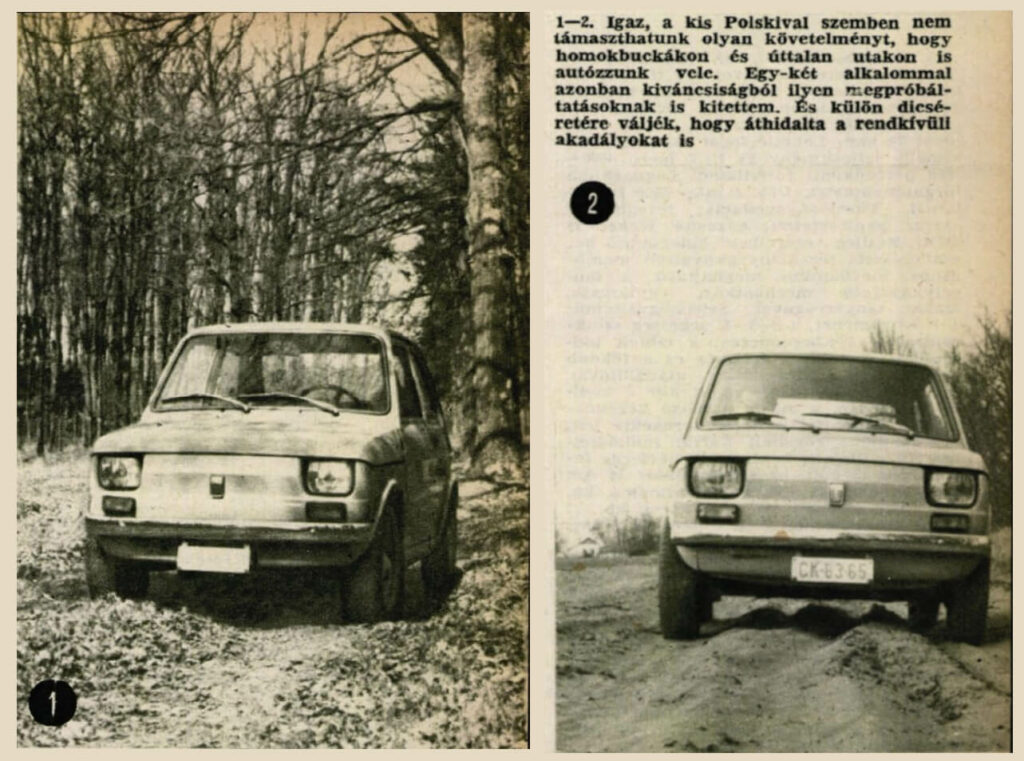
"It's noisy, sluggish and very uncomfortable," a know-it-all driver once described the little Polsky at a petrol station, with great pomposity. When I then asked him what he was basing his opinion on, it turned out that it was the first time he had seen it, and of course he had never been in it. He'd heard it from someone who'd also been told... .
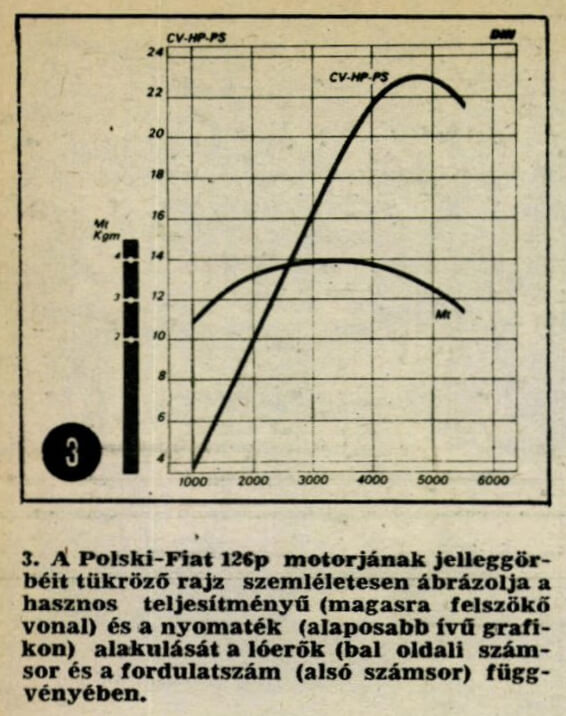
As many of you will already know from our previous reports, the Polski-Fiat 126p small car is powered by a two-cylinder, air-cooled, four-stroke, overhead-valve, in-line engine, including the transmission (gearbox, differential, clutch), which is mounted behind the axle of the rear wheels. Consequently, I never expected to drive the thousands of kilometres behind the wheel of a completely silent and quiet car. In fact, when 'pulling out' and when driving at excessively high speeds, the noise penetrates the cabin quite plastically. And this is obviously exacerbated when the otherwise very efficient air conditioning is on. However, the engine noise is far from unbearable, and is not always audible, except during the aforementioned pull-outs and hard driving. At a leisurely pace, maintaining a speed of 80 to 90 km/h, which can even be called economical, the cabin is actually quiet and pleasant to talk in. In any case, it's true that the insulation between the seats and the engine compartment could do with some improvement at the factory. There is room and scope for this.
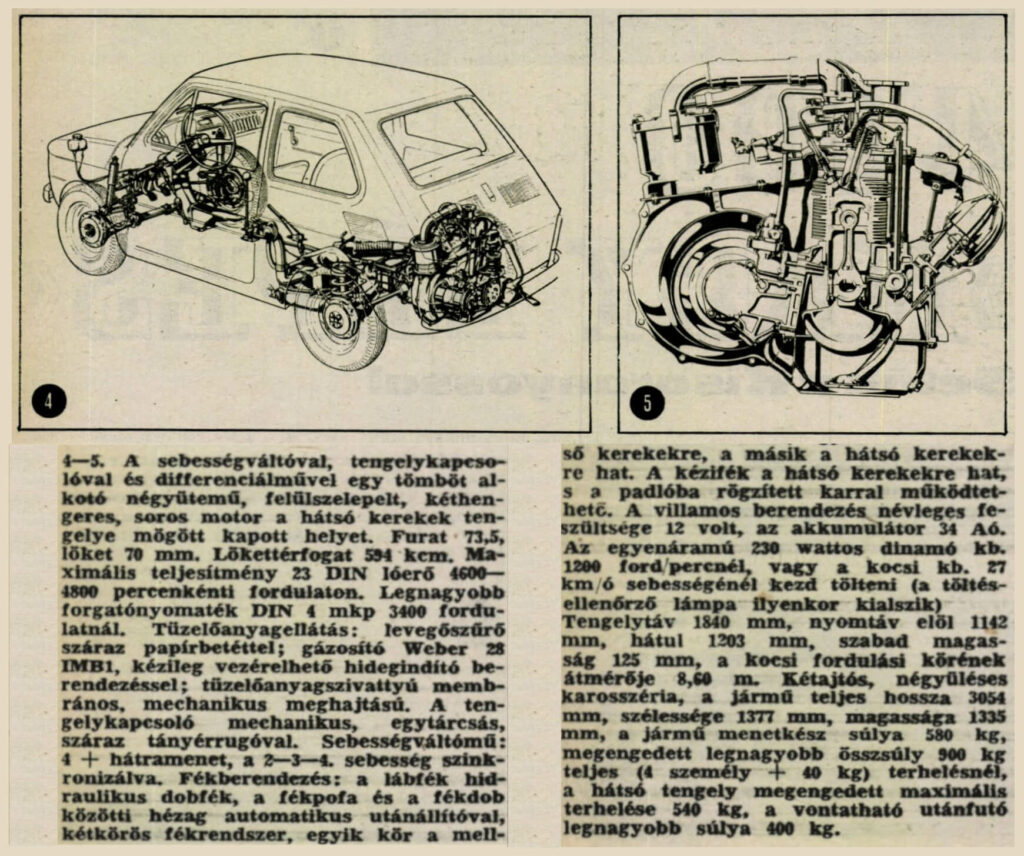
The 23 DIN horsepower that the engine produces is not much, but it's not a small amount either. In fact, it's just enough to get you everywhere on time with this really practical and cheap means of getting around. But if you're in a hurry, you can even get up to 110 mph. The roadholding and stability are not bad either. I consider the rumour that the 126p is only a city car, a so-called shopping car, to be wrong and somewhat pretentious. I have had several long journeys, so-called "big steps", to refute this. Of the 4,000 kilometres covered in two weeks, only 300-400 kilometres were on the streets of Budapest. The rest of the trips were made in Szeged, Debrecen, Miskolc, Pécs, Kaposvár and other directions. The "Know your country!" exploring tours, although not everywhere was on concrete. . and I didn't even have to leave much earlier to get somewhere on time. It's usually considered childish boasting nowadays when someone in company tries to impress you by saying that he, in his car, had left from somewhere at that time and arrived at that time. But let me make this mistake myself, for once, just to give you a vivid example. One early spring morning I had to go to Miskolc. It was pouring rain all the time. After two hours and forty minutes I reached my destination. True, almost non-stop. All we did was sit down for coffee in Mezőkövesd with my 100-kilo travelling companion - who, by the way, found the low-folding front seat very comfortable at the end of the journey. This is no mean feat, of course. It's just an example of how the little Polski is not just a shopping car: it can keep up on the highway too. And with not just one, but four people, it has good driving times. It can even overtake, if the traffic requires it. Of course, it doesn't have as much power in its engine as the big ones, but the important thing is to know which gears go with which speed. And that's very clearly illustrated
marked on the instrument panel.
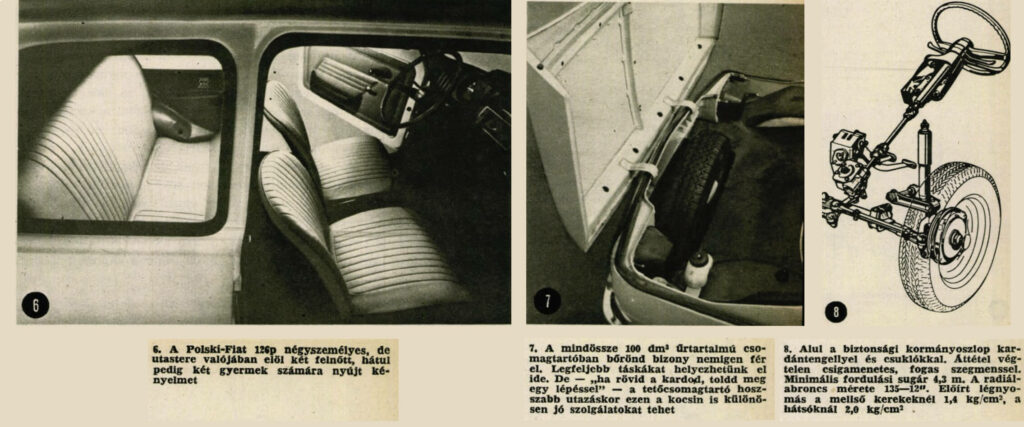
It's important to know the characteristics of your engine, to anticipate the characteristics of the revs and to take advantage of the torque that can be varied in every situation (and especially when overtaking) by changing gears and by quick and skilful downshifts. With this driving method, the engine of the little Polski will not feel stiff and will not feel sluggish in the least. But so, obviously, is driving other cars with similarly low horsepower.
As for the interior comfort of the car - well, opinions are divided on that too, and in more than one case, exaggerated accusations are being made. The truth is that the two front seats are comfortable even for people of above-average size, and getting in and out of the car is easy thanks to the wide-opening doors. The front seats slide backwards and forwards, and the rear seats can be fully folded forward when getting in. But beware: in the event of sudden braking or even a collision, the occupants will also tip forward with the seat! Therefore, we would like to draw your attention to the fact that, both in town and on the road, the built-in .
drive with seat belts.
Returning to the comfort of the cabin, the situation is somewhat different with the rear seats. You should expect that only two thin adults and adolescent children will be able to sit comfortably here (especially if the front seats are pushed back to the extreme rear position). That said, we have travelled with a full 'adult passenger load' and the rear passengers were not particularly 'broken' at the end of a long journey.
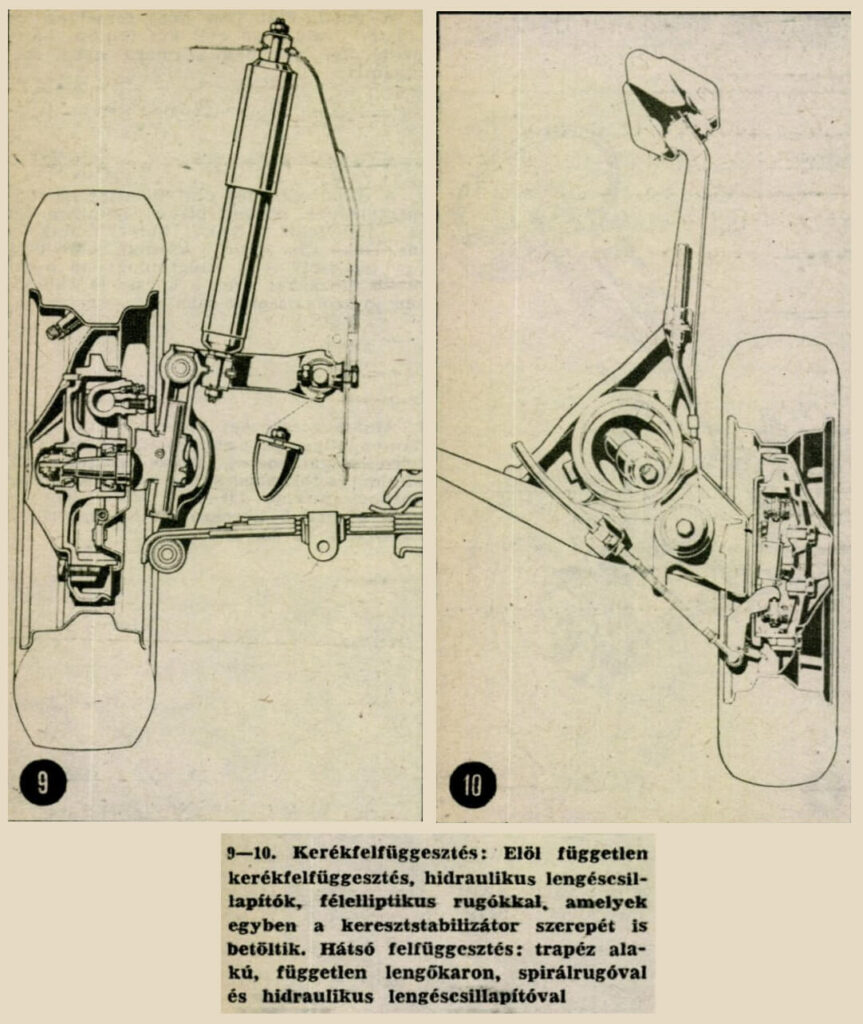
The rehearsal, which included one session of "Know your country!" tour was specifically designed to check the fuel consumption of the car. We set off from Budapest with a total of three people, and I carried a five-litre can of petrol, determined to let it run out completely by recording the mileage of the start with a full tank. We were driving around Szeged and Pusztaszer at the time; there were plenty of kilometres on less good stretches of road. I still didn't manage to exhaust the tank. On the way back, I avoided the RUB bridge on Gubacsi road on the side, because I was afraid that I would run out of petrol on the uphill. We almost couldn't believe that we were rolling to the Shell fountain on Soroksári út with the engine still running. And even then we could only fit 20 litres of super into the 21-litre tank. The end result was that on the highway with three people, constantly maintaining the forced 90-100 km/h, the car consumed 5.5 litres of super mixed with extra for 100 km. (It's a pity that with the 7.5 compression ratio, they set this engine to such a high octane 94. Is this really justified?) Another interesting aspect of this test was that when the red light before Kecskemét indicated that the reserve was running low, we were able to drive another 100 kilometres.
On city roads - especially in Budapest - I had the enormous advantage of not having any parking problems. I could always find so many spaces between two cars somewhere, where other cars could not - or dared not - park because of their size or the driver's lack of manoeuvrability. In these "holes" the little Polski easily finds a place for itself everywhere. A not insignificant advantage is that in the big city it is now just as important to have somewhere to stop as it is to drive. What did bother me (even on the highway), however, was that when changing lanes or turning corners, when the interior mirror no longer showed the traffic behind in a reassuring way, I didn't get any outside mirror assistance. Because there is none. The situation was not much more reassuring when looking back over the left shoulder, because the door pillar just obscures the rear view. But this unjustifiably "skimped" exterior mirror can easily be replaced. I have driven at night, in the rain, for quite a long distance. The windscreen wiper, which wipes almost the entire window surface, and the windscreen washer and the lights are also quite effective.
And finally, the last major test drive experience. Motorists are usually not happy when the morning news forecast for a longer trip predicts inclement weather. Except when it comes to getting to know a new car. On Sunday, 23 March, when the morning chronicle announced that snow and sleet were forecast for the whole day and the whole country, I set off, with the idea of a day trip, on the Pécs-Szekszárd-Tamási-Siófok-Budapest line. The weather was really harsh: I drove in snow showers, with strong gusts of wind (to which the car is very sensitive), accompanied by snowy rain all the time. Where possible, at 80-90-100 km/h, and even above 100 km/h on the motorway, I found that the car's roadholding and cornering stability were reliable even in such conditions. But again, particular care must be taken with gusts of wind and gentle manoeuvres.
So much for the experiences and lessons learned from the 4000 km test drive. In case I have left anything out, I have already written several times in our magazine about this novelty, which is also awaited by many of us. When will it be possible to subscribe and how much will it cost? Well, I can't tell you anything new: there will be around 400 units this year, the date for taking out a subscription has not yet been set, and the car will cost around 60,000 forints.
All in all: it's true that the Polski-Fiat 126p is a small car - but during the 4000 km test drive I learned to appreciate it. . .
Tibor Almássy
